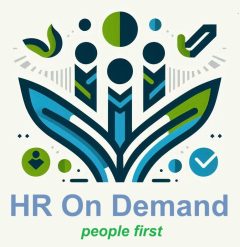Remote and Hybrid Work Strategies: Navigating the New Workplace Landscape
The Evolution of Work: Understanding Remote and Hybrid Models
In the wake of global workplace transformations, remote and hybrid work strategies have become more than just a temporary solution—they’re now a fundamental redesign of how organizations operate. For human resources professionals, this shift represents both a significant challenge and an extraordinary opportunity to reimagine workplace productivity, employee engagement, and organizational culture.
The Current State of Remote and Hybrid Work
Recent studies reveal a dramatic shift in workplace dynamics. According to a 2022 McKinsey report, approximately 58% of Americans now have the opportunity to work from home at least one day per week. This represents a massive change from pre-pandemic workplace structures, highlighting the critical role of human resources tools in managing this transition.
Key Statistics:
– 35% of job offers now include remote work options
– 76% of employees prefer a hybrid work model
– Companies offering flexible work arrangements see 25% lower employee turnover rates
Strategic Considerations for Implementing Hybrid Work Models
1. Technology Infrastructure
Successful remote and hybrid work strategies fundamentally depend on robust technological infrastructure. Organizations must invest in:
– Cloud-based collaboration platforms
– Secure virtual private networks (VPNs)
– Advanced communication tools
– Cybersecurity protections
2. Policy Development
Clear, comprehensive policies are essential. These should address:
– Expectations for in-office and remote work
– Performance measurement criteria
– Communication protocols
– Equipment and technology support

Employee Engagement in Remote Environments
Maintaining team cohesion and employee engagement becomes more complex in distributed work environments. Human resources professionals must develop innovative approaches to:
– Foster virtual team building
– Create meaningful connection points
– Ensure consistent communication
– Support mental health and well-being
“The future of work is not about location, but about creating meaningful connections and delivering exceptional results.” – Modern HR Leadership Perspective
Technology and Human Resources Tools
Emerging human resources tools are transforming remote work management:
– AI-powered performance tracking systems
– Virtual onboarding platforms
– Real-time communication and collaboration software
– Employee sentiment and engagement analytics
Recommended Tools:
– Slack
– Microsoft Teams
– Zoom
– Asana
– Workday
– BambooHR
Legal and Compliance Considerations
Remote work introduces complex compliance challenges:
– Wage and hour regulations
– Data privacy requirements
– Workplace safety standards
– Cross-jurisdictional employment considerations
Organizations must develop comprehensive frameworks that:
– Clearly define remote work boundaries
– Ensure equitable treatment of remote and in-office employees
– Maintain rigorous compliance standards
Best Practices for Successful Implementation
1. Flexible Approach
– Customize strategies to organizational needs
– Allow individual team and departmental variations
– Continuously evaluate and adjust approaches
2. Employee-Centric Design
– Prioritize employee preferences
– Create opt-in/opt-out mechanisms
– Gather consistent feedback
3. Technology Investment
– Provide necessary hardware and software
– Offer technical support
– Ensure seamless digital experiences
Measuring Remote Work Effectiveness
Key Performance Indicators (KPIs):
– Productivity metrics
– Employee satisfaction scores
– Retention rates
– Collaboration efficiency
– Cost savings
“Successful remote work is about trust, technology, and thoughtful design.” – HR Innovation Expert
Future Outlook
The remote and hybrid work landscape will continue evolving. Organizations that remain adaptable, invest in technology, and prioritize employee experience will thrive.
Emerging Trends:
– Increased global talent acquisition
– More sophisticated remote work technologies
– Enhanced focus on employee well-being
– Greater emphasis on asynchronous collaboration
Conclusion:
Remote and hybrid work strategies represent a fundamental reimagining of organizational structures. By leveraging advanced human resources tools, maintaining flexibility, and focusing on employee needs, businesses can create dynamic, resilient workplaces prepared for future challenges.
Strategic implementation requires ongoing commitment, continuous learning, and a willingness to experiment. The most successful organizations will view remote work not as a temporary solution, but as a strategic opportunity for innovation and growth.


